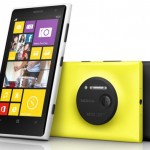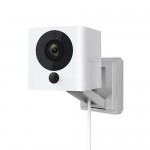
Key Features
- Review Price: £59.99
Available April 27 for Nintendo Switch
Turning up at a Nintendo Labo event as the only adult without a child in tow had me feeling awkward. I felt like a bit like Billy Madison. But within five minutes of building my first piece of kit I was the biggest kid in the room.
Nintendo Labo is simply magic. After getting a chance to build, play and discover how exactly the developer has turned flatpacks into funpacks, I’ve been completely won over once again.
Nintendo Labo – What is it?
This will sound silly, but even moments before building my first Labo, I still didn’t expect it to be just cardboard. Being a console peripheral, and one made by Nintendo, I thought somehow it would be some sort of ‘cardboard plus’. But no, Nintendo’s new way to play genuinely is thin pieces of flatpack card which can be built into toys to be used with a new lineup of video games.

With the Nintendo Switch – in particular using the Joy-Con’s infrared sensor, which I’ll come to later – you can build a piano, a house, a fishing rod, a bike and even your own robot armour to experience games in a brand-new way.
Nintendo Labo comes in two packs: Variety Kit and Robot Kit. The former will enable you to build a bunch of different flatpack creations, including the RC car, the house, the bike, the fishing rod and the piano. The Robot Kit only includes the Robot, naturally. Once these are made, you place the Switch and Joy-Con into your creations to play.
Nintendo Labo – Variety Kit
It won’t take long with Nintendo Labo before your mind explodes with the sheer possibilities this new ‘thing’ introduces. First up is the creation of the cardboard toys themselves, which is an incredibly fun process. I started with the simplest of the set: the RC car. More complex creations like the piano and even the robot can take hours to complete, according to Nintendo – and looking at the amount of detail in these kits, I can see why.
Thankfully the flatpack includes two RC cars as standard, so parents with two children, or an envious parent, can easily get in on the action.
The tutorials are excellent, too, and can be progressed at your own pace, as well as rewound for any steps to be repeated if something goes awry.
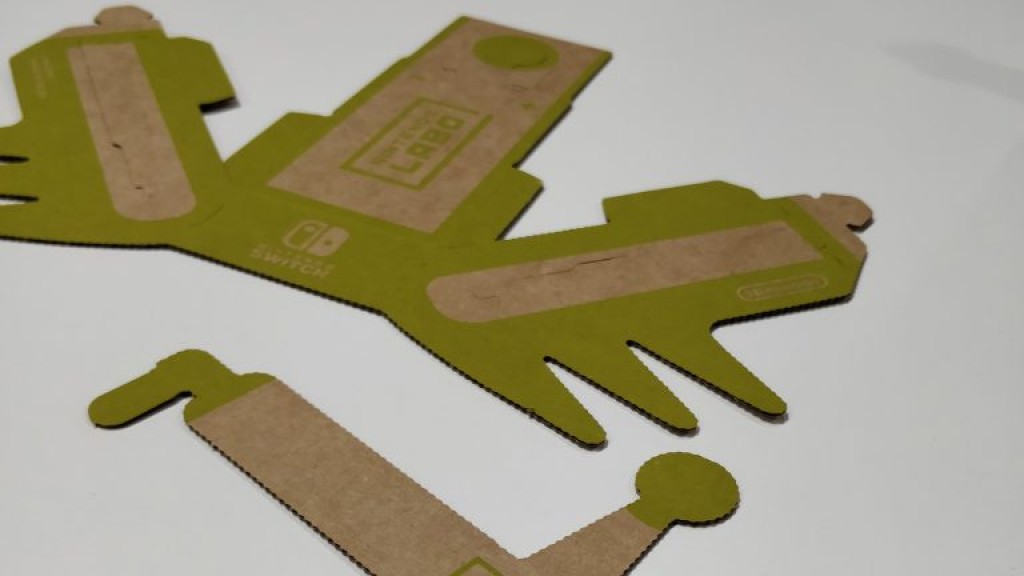
Once the car is complete, then comes playtime. By sliding the two Joy-Con into each side of the cardboard car, you can drive it using the Switch. The display shows both Joy-Con, and touching the on-screen display makes each one vibrate, which makes the car move forward. Mine skated at a 45-degree angle, almost like a chess bishop. As always, Nintendo has anticipated this, and by clicking a button, you get to peek “under the hood” and see how exactly the tech works. You can adjust the frequency at which both Joy-Con vibrate, therefore making it move straight. There’s also an “auto” mode, which uses the right Con’s infrared sensor – by placing objects in front of it, the car will automatically drive to them.
When the Switch launched I was critical of how much tech was housed in the Joy-Con yet hardly used by any games, but Labo makes excellent use of all of it across its titles, and the RC car is a perfect example.
Once you’re done playing – and to be honest, the RC Car’s fun does wear out quickly, especially if you don’t have another person to race or to play cardboard Robot Wars with – then comes the next part of Labo: decoration.
Nintendo encouraged us to make the kits our own. Again, at first I was hesitant to get involved, I was too old to colour in a cardboard toy, wasn’t I? Not after inspiration struck, and I decided to turn this little car into a deer. The cardboard includes additional pieces which you can use to kit out the creations, one of which was a scooper, like at the front of a digger, which I subsequently turned into antlers, and an elephant’s head which I painted into a deer. Some still said it was an elephant, but damn it I’m proud of what I made, to the point where I concentrated so hard on staying inside the lines whilst colouring that I genuinely ignored everything else going on around me for a solid 10 minutes.
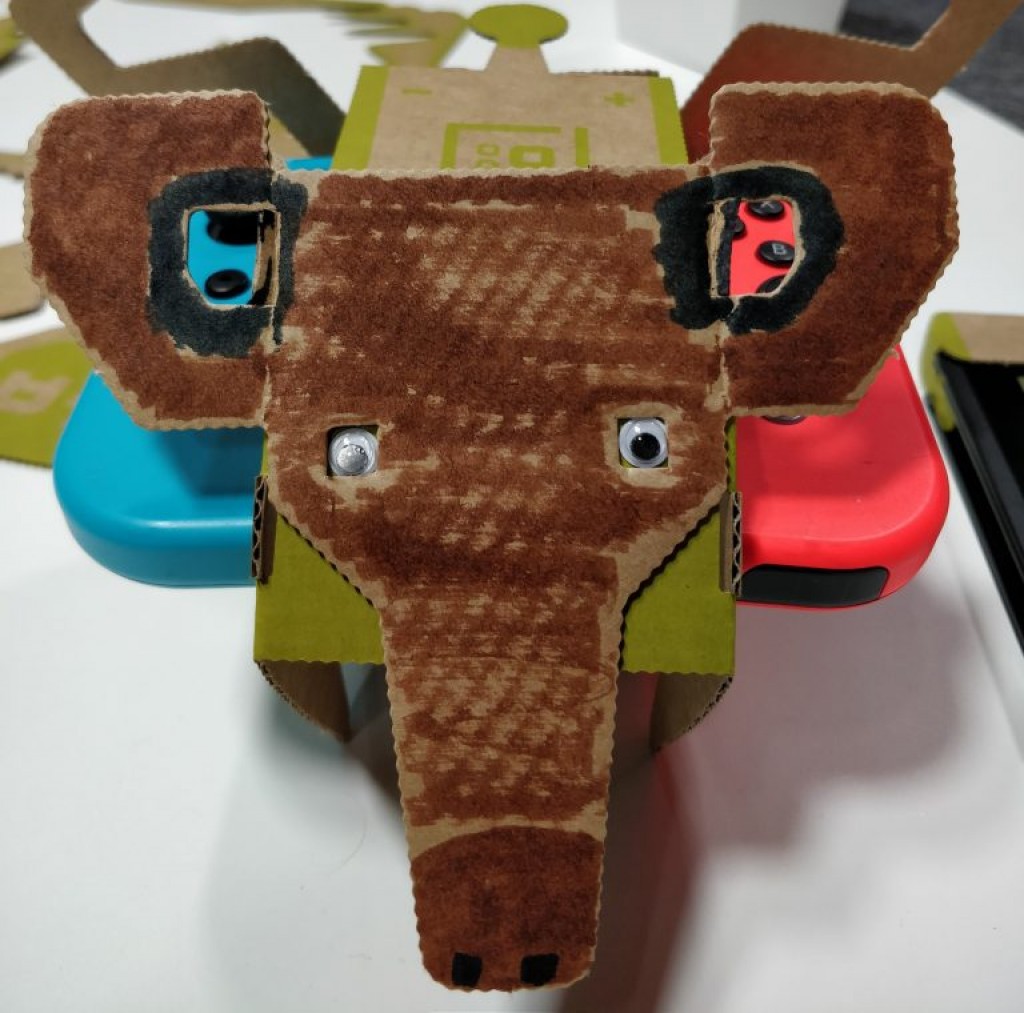
Up next I moved onto the fishing part of the Variety Pack. The Switch sits vertically in a cardboard dock, with a piece of string sticking out of the top, connecting to a cardboard rod that houses the two Joy-Con.
Being one of the oldest people in the room playing Labo, fishing was of course my favourite mini-game of the pack. The one-to-one movement as I lifted the rod and saw the on-screen hook move at the same speed was brilliant, and rotating the reel provided a really satisfying clicking sound, just like the real thing.
The lower you let the hook sink, the more challenging the fish are to catch. I was told a shark sits at the bottom of the ocean and was the toughest to catch, so naturally I tried for it. It was hilarious to watch so many kids come and go as their patience for a fish to bite grew thin and their excitement to play everything else become insatiable, while parents remained completely willing to wait it out for the big catch.
After giving up on the shark, I moved on to the motorbike build, which was excellent, even if the racing itself a little tame. Visually it’s very reminiscent of Mario Kart’s bikes, with a lot less fanfare. You can pop wheelies by lifting the whole contraption up, go faster by revving the handle further and even have to turn the engine on at the start of the race. It’s a nifty little thing.
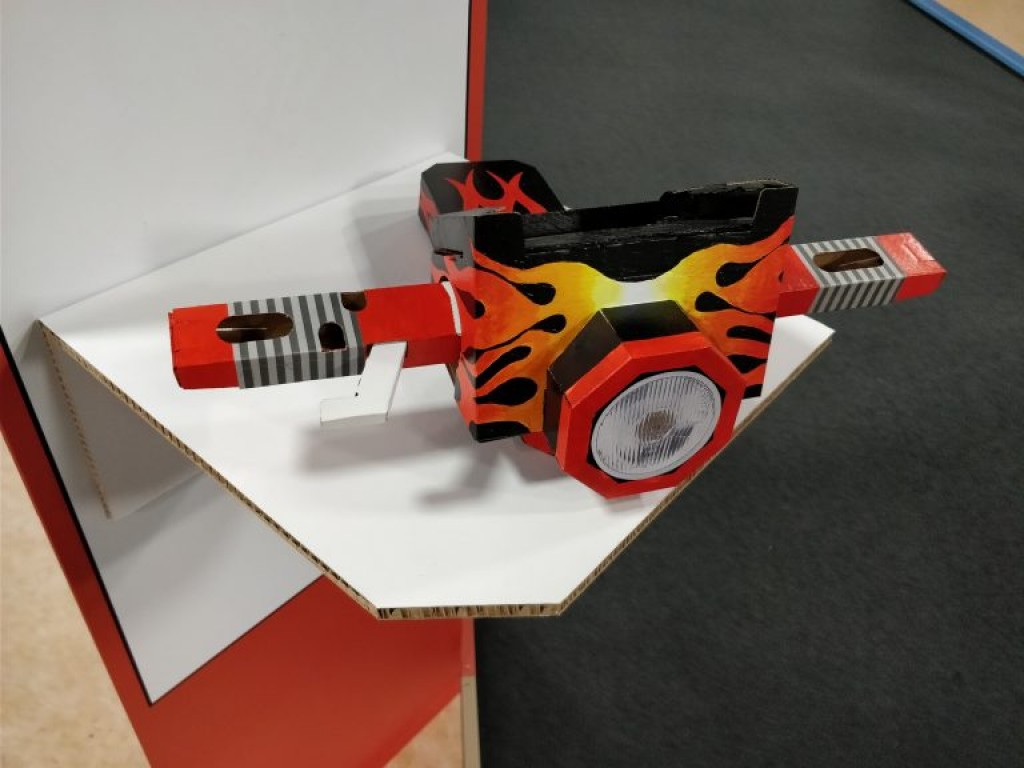
However, in my exuberance to win the race, I felt the cardboard give as I revved a little too hard. This will be perhaps one of the builds most likely in need of quick repair for the more competitive players.
The best feature in the whole pack, however, is Garage mode. In here Nintendo peels back the curtain and shows you exactly how Labo works. Peeking under the hood and looking at how the Joy-Con’s IR sensor reads the tiny white stickers on the cardboard, and this in turn leads to you playing the piano, engaging with a Tamagotchi-like creature or catching a fish was mesmerising.
It’s not often I’m in awe of technology, but getting the chance to see the inner workings of these deceptively complex contraptions, I felt myself glowing with intrigue.
You also get a LittleBigPlanet-esque creation mode, where you can change the inputs and outputs of every piece of kit and combine them to make your own games. Want to use the motorbike kit to steer the RC Car? You can.
There are also additional pieces of kit within the pack you can use to make your own games, like a little cardboard man and blaster where you can create your own shoot-’em-up. Combining this with the ability to decorate each piece of kit, it’s amazing to see Nintendo fuelling all manner of creativity of young kids, from the artistic to technological minds, there’s something in here for every kid with just a spark of imagination.
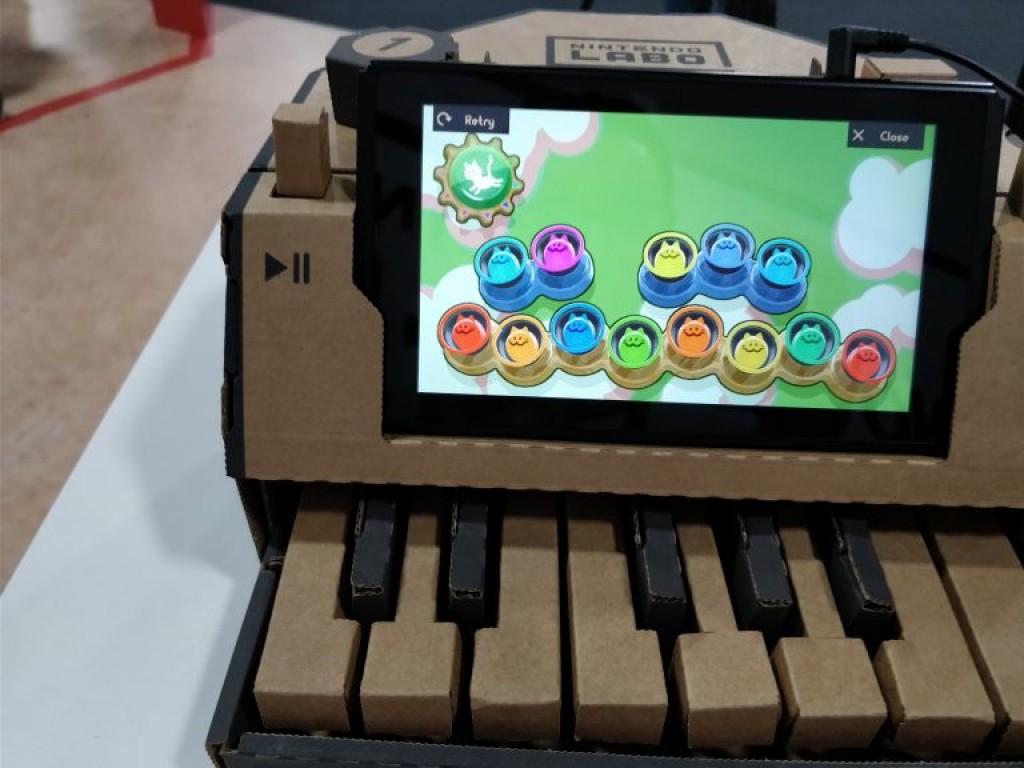
Nintendo Labo – Robot Kit
I saved the biggest piece of kit for last. With the Robot having a pack all to itself, naturally it’s a huge build. You get a giant backpack, straps that fit around your feet, and paddles to hold.
Punching, stomping and walking my way through a Star Fox-esque metropolis and destroying everything in my path for the high score, I couldn’t help being massively underwhelmed by the game itself. It’s an incredibly simple smash-’em-up where you simply have to destroy every building to earn a multiplier and bigger score. Lifting your arms in the air will make your bot fly, crouching turns it into a tank, and lifting your legs up and down makes it walk, while punching, naturally, punches.
It felt like a mini-game from the ill-fated Star Fox Zero, and once the level was over, I had no desire to play it again. I hope the full game offers more for buyers than what there is here. You do get Garage mode again in this kit, though.
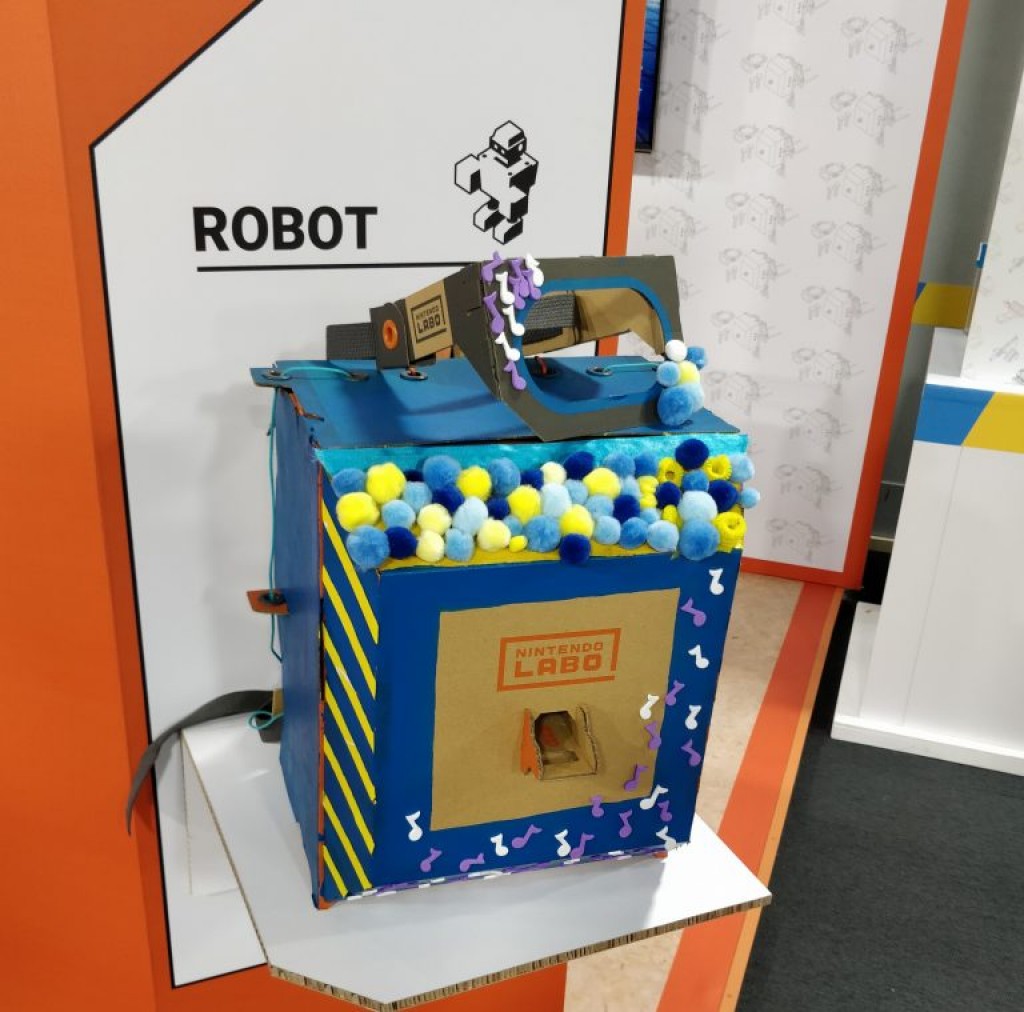
First impressions
There are some fair skepticisms about Nintendo Labo: do the games have enough to keep players around? How do you store the cardboard creations without damaging them? Isn’t it a tad expensive, especially for larger families? However, this is the most innovative gaming peripheral I’ve ever seen, and it’s more environmentally friendly than any that have come before.
This very much feels like the start of something. I dearly hope Nintendo expands upon this concept with more experiences and richer games which could pop up on the eShop. I’ll gladly buy the lot. If SEGA Bass Fishing comes to the eShop with fishing rod support, I’ll even buy it twice.
Nintendo has done so much within this kit to fuel a child’s creativity that it’s astounding. The Garage suite is the absolute crown jewel in this collection, and will no doubt be the seed which grows the next generation of game devs.
There’s so much here for children and adults alike to adore. We’ll just have to wait and see how it develops, as well as how the cardboard stands up to long-term use.
Source: trustedreviews.com





































